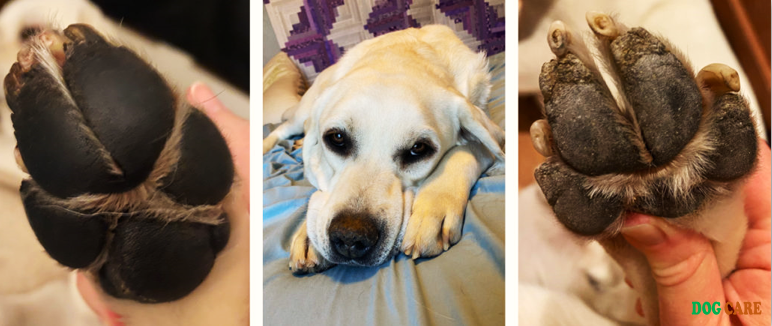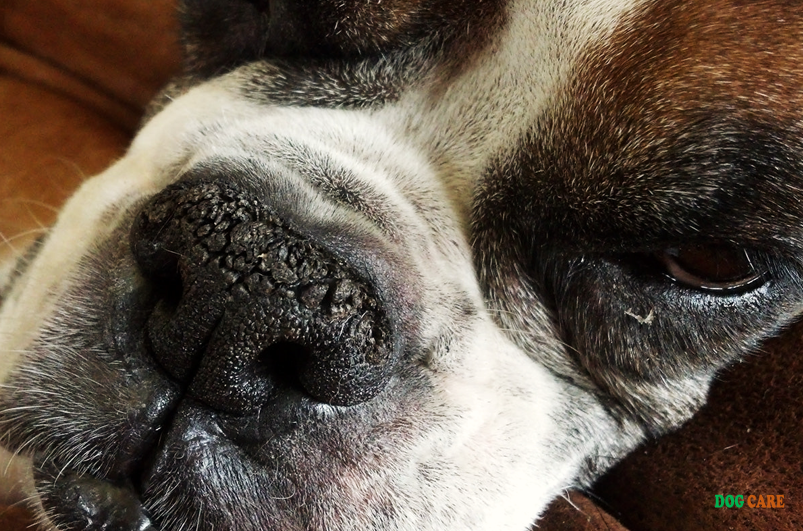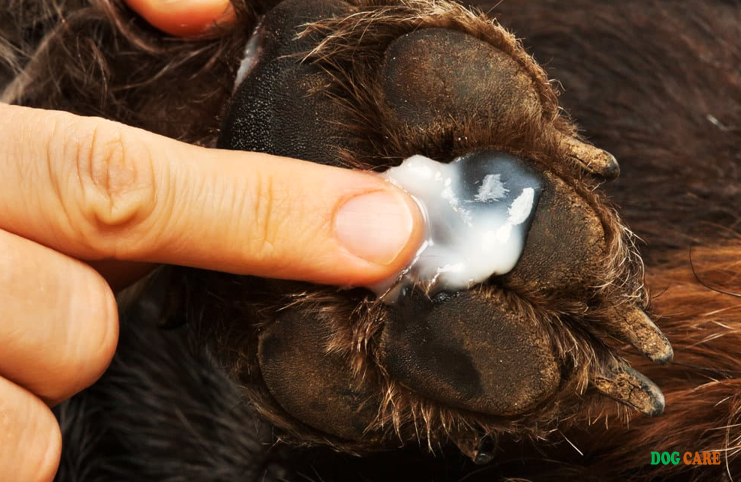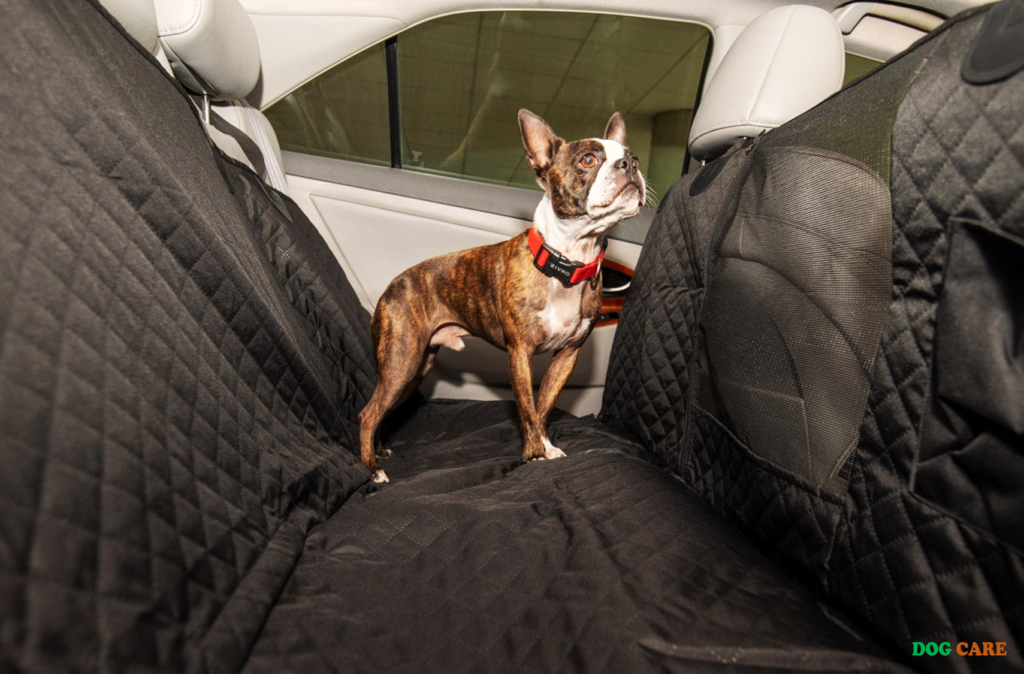Home Remedies for Hyperkeratosis in Dogs include regular moisturizing with oils and balms, dietary adjustments, and using topical treatments such as coconut oil or shea butter to soften and remove excess keratin. Hyperkeratosis is a common skin condition in dogs characterized by the thickening and hardening of the paw pads or nose.
It can cause discomfort and difficulty walking for dogs, but there are several natural remedies that can help alleviate symptoms and improve their condition. By following these home remedies, pet owners can provide relief and promote healthier skin for their furry friends.

What Is Hyperkeratosis In Dogs?
In this blog post, we will explore the topic of hyperkeratosis in dogs. Hyperkeratosis is a condition that affects a dog’s skin, specifically the nose and paw pads. If you’ve noticed your furry friend’s nose or paw pads becoming rough, crusty, and thickened, they might be suffering from hyperkeratosis. Let’s dive deeper and understand the definition, causes, symptoms, and diagnosis of this condition.
Definition And Causes
Definition:
Hyperkeratosis is a dermatological condition characterized by excessive keratin production in the skin, leading to the thickening and hardening of affected areas.
Causes:
Hyperkeratosis in dogs can have various underlying causes. Some of the common culprits include:
- Breed Predisposition: Certain dog breeds, such as Labradors, Golden Retrievers, and German Shepherds, are more prone to developing hyperkeratosis.
- Genetic Factors: Inherited genetic mutations can contribute to the development of hyperkeratosis.
- Autoimmune Disorders: Underlying autoimmune diseases can trigger hyperkeratosis in dogs.
- Infections: Bacterial, fungal, or parasitic infections can lead to hyperkeratosis as a secondary condition.
- Environmental Factors: Excessive exposure to rough surfaces, extreme weather conditions, or harsh chemicals can contribute to the development of hyperkeratosis.
Symptoms And Diagnosis : Home Remedies for Hyperkeratosis in Dogs
Symptoms:
When it comes to identifying hyperkeratosis in dogs, certain symptoms can serve as red flags. Look out for:
- Thickening of the nose or paw pads
- Dry, rough, and crusty skin
- Cracks or fissures in the affected areas
- Discomfort or pain while walking or touching the affected areas
- Abnormal nail growth
Diagnosis:
If you suspect your dog has hyperkeratosis, it is essential to consult a veterinarian for proper diagnosis. The vet will perform a thorough physical examination and may recommend additional tests, such as skin scrapings, biopsies, or blood work, to rule out underlying causes and confirm the diagnosis of hyperkeratosis.
Conventional Treatment Options
When it comes to managing hyperkeratosis in dogs, there are several conventional treatment options that can help alleviate symptoms and improve your furry friend’s condition. These treatment methods include the use of topical medications and vitamin supplements.
Topical Medications
Topical medications are a common choice for managing hyperkeratosis in dogs. These medications are usually designed to soften and moisturize the skin, reducing the buildup of keratin. Some popular topical medications used for treating hyperkeratosis include:
- Salicylic acid creams – These creams help to remove excess keratin and promote skin exfoliation.
- Urea-based creams – Creams containing urea can effectively soften and hydrate the skin, making it easier to manage hyperkeratosis symptoms.
- Coal tar ointments – Coal tar is known for its anti-inflammatory properties and can help soothe the affected skin.
- Petroleum jelly – Applying petroleum jelly to the affected areas can help soften the thickened skin.
It’s important to note that when using topical medications, it’s crucial to follow the instructions provided by your veterinarian. Additionally, it’s essential to monitor your dog for any adverse reactions or irritation caused by the medications.
Vitamin Supplements
Vitamin supplements can also play a significant role in managing hyperkeratosis in dogs. These supplements can help support overall skin health and improve the condition of the affected areas. Some vitamins known to be beneficial for dogs with hyperkeratosis include:
- Vitamin E – This antioxidant can help reduce inflammation and promote healthy skin.
- Vitamin A – Vitamin A is essential for maintaining normal skin health and can aid in reducing keratin buildup.
These vitamins can be administered orally, either through diet or supplements. It’s crucial to consult with your veterinarian before starting any vitamin supplementation to ensure the correct dosage and monitor your dog’s progress.
Home Remedies For Hyperkeratosis
Discover natural and effective home remedies to alleviate hyperkeratosis in dogs. These remedies provide relief from dry, thickened skin and help restore your furry friend’s paws to optimal health.
Hyperkeratosis is a condition that causes thickening and hardening of the skin and paw pads in dogs. While it is always important to consult a veterinarian for proper diagnosis and treatment, there are some home remedies that can help alleviate the symptoms of hyperkeratosis in dogs. These remedies focus on moisturizing the affected areas, applying natural oils, and making dietary changes. One of the most effective ways to treat hyperkeratosis in dogs is by providing regular moisturizing paw soaks. These soaks can help soften the thickened skin and prevent it from cracking and becoming painful. To create a soothing paw soak, follow these simple steps:
- Fill a basin or bucket with warm water.
- Add a few tablespoons of Epsom salt to the water.
- Gently place your dog’s paws into the warm saltwater solution.
- Allow your dog to soak their paws for about 10-15 minutes.
- After the soak, pat your dog’s paws dry with a clean towel.
Another effective home remedy for hyperkeratosis in dogs is the application of natural oils. These oils help moisturize the skin and prevent further dryness and cracking. Here are some natural oils that can be beneficial for dogs with hyperkeratosis:
- Coconut oil: Apply a small amount of coconut oil to the affected areas and gently massage it into the skin.
- Shea butter: Shea butter has excellent moisturizing properties. Rub a small amount of shea butter onto your dog’s paw pads.
- Olive oil: Massage a few drops of olive oil onto the dry and thickened skin to provide relief and hydration.
Making dietary changes can also play a role in managing hyperkeratosis in dogs. Ensuring that your dog’s diet is rich in essential fatty acids and nutrients can promote healthy skin and coat. Consider adding the following foods to your dog’s diet:
| Food | Benefit |
|---|---|
| Fatty fish (salmon, mackerel) | Provides omega-3 fatty acids, which help reduce inflammation and promote skin health. |
| Flaxseed | Contains alpha-linolenic acid, an omega-3 fatty acid that aids in skin hydration. |
| Pumpkin | Rich in antioxidants and beta-carotene, which support healthy skin and immune function. |
By incorporating moisturizing paw soaks, natural oils, and dietary changes into your dog’s routine, you can help manage the symptoms of hyperkeratosis. Remember to consult with your veterinarian for a proper diagnosis and guidance on the best approach for your dog’s specific condition.

Moisturizing Paw Soaks
If your furry friend is suffering from hyperkeratosis, moisturizing paw soaks can provide much-needed relief. These paw soaks help to soften and hydrate dry and cracked paw pads, reducing discomfort and promoting healing. In this article, we will explore two effective ways to create soothing paw soaks for your dog.
Using Warm Water And Mild Soap
To start the pampering process, fill a basin with warm water and add a gentle, mild soap suitable for dogs. Ensure that the water is comfortably warm, avoiding extremes in temperature. The warm water will help to relax your dog and provide a soothing sensation to their paws.
Place your pup’s paws into the basin and let them soak for about 5-10 minutes. Gently massage the paws during this time to help the warm water and soap mixture penetrate the skin and moisturize the dry areas. Remember, the gentle massage should not cause any discomfort to your dog.
After the soak, carefully dry your dog’s paws using a soft towel, making sure to get in between the toes and around the paw pads. Be gentle during the drying process to avoid any irritation or harm to your dog’s sensitive paws.
Adding Epsom Salt For Soothing Effects
In addition to using warm water and mild soap, adding Epsom salt to the paw soak can provide extra soothing effects for your dog’s hyperkeratosis. Epsom salt is known for its anti-inflammatory properties and can help to alleviate discomfort and reduce any swelling or redness.
To create a Epsom salt paw soak, dissolve half a cup of Epsom salt into a basin filled with warm water. Once the salt has completely dissolved, place your dog’s paws into the mixture and allow them to soak for approximately 10-15 minutes.
During the soak, gently massage your dog’s paws to help the Epsom salt solution penetrate the dry and cracked skin. This mild massage will further aid in soothing your dog’s discomfort and promoting healing.
After the soak, carefully dry your dog’s paws using a soft towel, ensuring that all moisture is removed to prevent any bacterial growth. Remember to be gentle throughout the drying process, as your dog’s paws may still be sensitive.
Applying Natural Oils
When it comes to treating hyperkeratosis in dogs, natural remedies can be a safe and effective option. One method that has gained popularity among pet owners is the application of natural oils. These oils not only moisturize the affected areas but also provide nourishment to the skin, helping to reduce the thickening and cracking commonly associated with this condition.
Coconut Oil
Coconut oil is a versatile natural remedy classified as an emollient, which means it can penetrate the skin and retain moisture. This makes it an ideal choice for managing hyperkeratosis in dogs. The fatty acids present in coconut oil not only moisturize the skin but also possess antimicrobial properties that can help prevent infections in cracked areas.
When using coconut oil to treat hyperkeratosis in your furry friend, start by warming a small amount of the oil between your hands. Gently massage the warm oil onto the affected areas, focusing on the thickened skin. Apply this treatment twice a day, ensuring the oil is well-absorbed by the skin. Over time, you may notice the excess keratin reduction and improved overall skin health in your canine companion.
Olive Oil
Olive oil, another natural oil, can also be effective in managing hyperkeratosis in dogs. Its moisturizing properties can help soften the thickened skin and alleviate discomfort. Additionally, the antioxidants present in olive oil can promote healing and protect the skin from further damage.
To apply olive oil to your dog’s affected areas, gently pour a small amount onto a clean cloth or cotton pad. Gently dab the oil onto the thickened skin, making sure to cover the entire affected area. Leave it on for about 10 minutes, allowing the oil to penetrate the skin. Afterward, use a clean cloth or paper towel to wipe away any excess oil. Repeat this process twice a day for effective results.
Remember, consistency is key when using natural oils to treat hyperkeratosis in dogs. With regular application and proper care, you can help your furry friend find relief from the discomfort of this condition and promote healthy skin regeneration.
Dietary Changes
When it comes to managing hyperkeratosis in dogs, making the right dietary changes can play a crucial role in improving their skin health. Incorporating certain nutrients into their diet can help alleviate symptoms and promote healthier skin and coat.
Incorporating Omega-3 Fatty Acids
Adding omega-3 fatty acids to your dog’s diet can have a significant impact on their skin health. These essential fatty acids help reduce inflammation and enhance the natural moisturizing capabilities of the skin. They can be found in various food sources, such as fish oil, flaxseed, and chia seeds.
To incorporate omega-3 fatty acids into your dog’s diet:
- Include fish oil supplements that are specifically formulated for pets. These supplements are a rich source of omega-3 fatty acids and can be easily added to your dog’s food.
- Add small portions of fatty fish like salmon or mackerel to their diet. These fish are packed with omega-3 fatty acids and can help improve their skin condition.
- Consider sprinkling ground flaxseed or chia seeds over your dog’s meals. These seeds are rich in omega-3 fatty acids and can be a great addition to their diet. However, ensure they are ground to maximize absorption.
Supplementing With Biotin
Biotin is another key nutrient that can aid in the treatment of hyperkeratosis in dogs. This B-vitamin plays a vital role in maintaining healthy skin and coat. It helps strengthen the skin’s protective barrier and promotes new cell formation.
To supplement your dog’s diet with biotin:
- Consult with your veterinarian to determine the appropriate dosage of biotin supplements for your dog based on their size and condition.
- Look for high-quality pet-specific biotin supplements that ensure proper absorption and bioavailability.
- Administer the recommended dosage of biotin supplements daily to provide your dog with the necessary amount of this essential nutrient.
Alongside incorporating omega-3 fatty acids and supplementing with biotin, it is essential to feed your dog a well-balanced, nutrient-rich diet that supports their overall health. Remember to consult with your veterinarian before making any significant dietary changes to ensure they are appropriate for your dog’s specific needs.

Conclusion
To conclude, these home remedies can be highly effective in managing hyperkeratosis in dogs. By following a regular grooming routine, using moisturizers and paw balms, and incorporating a healthy diet, you can help alleviate your dog’s discomfort and prevent further progression of the condition.
Remember to consult with your veterinarian for a proper diagnosis and customized treatment plan. With these natural remedies, you can ensure your furry friend’s paws stay healthy and happy.


